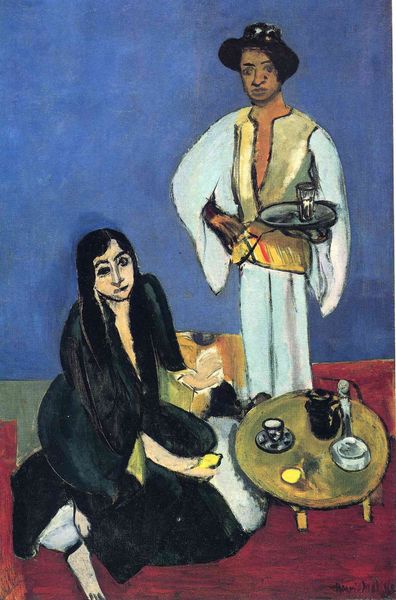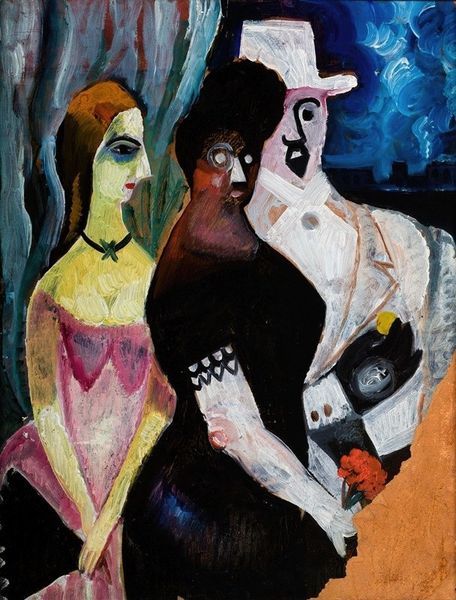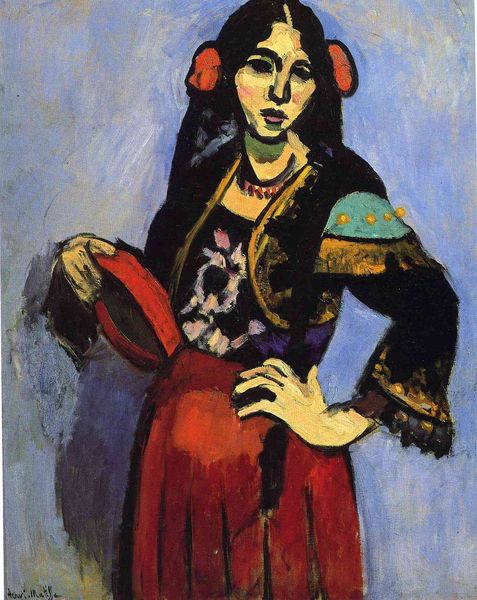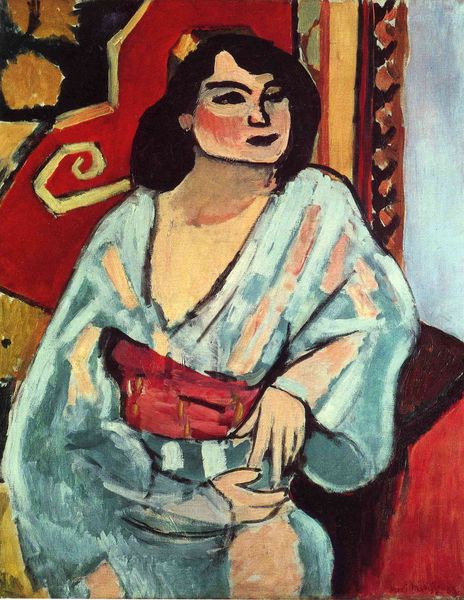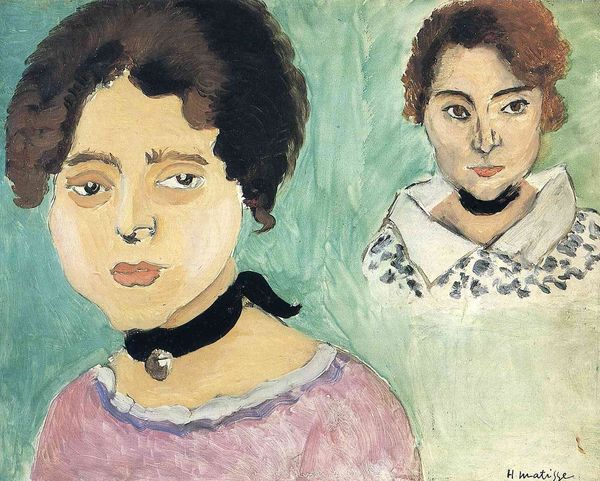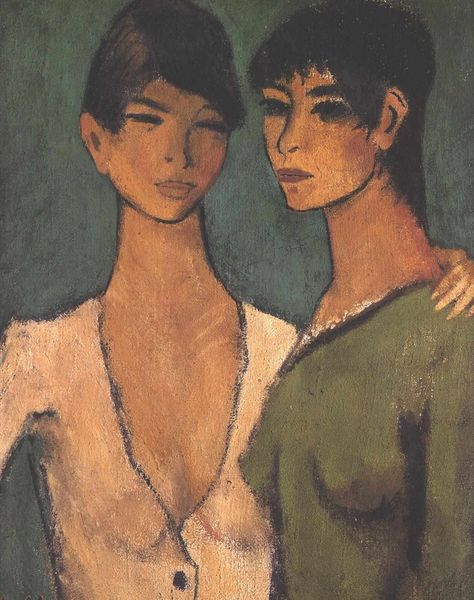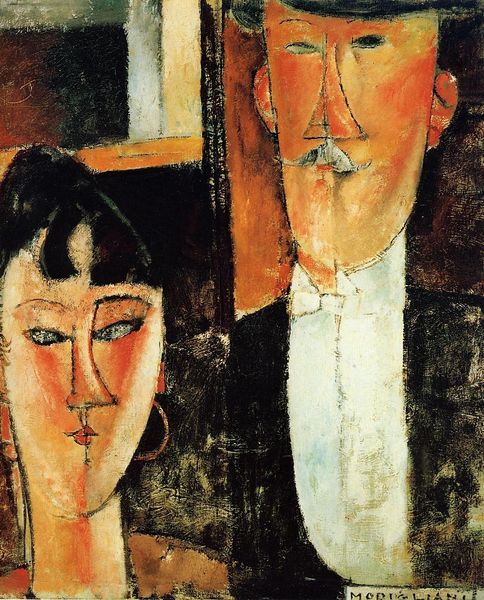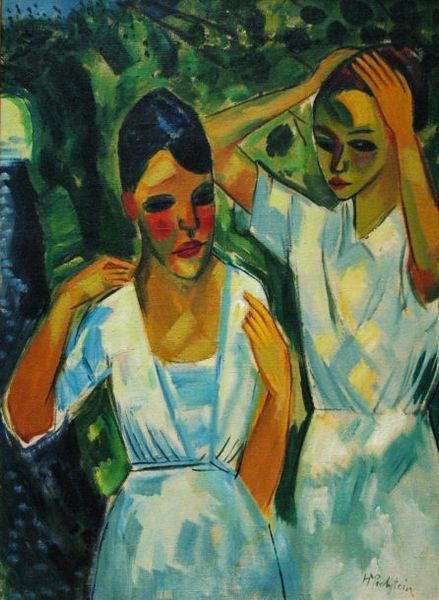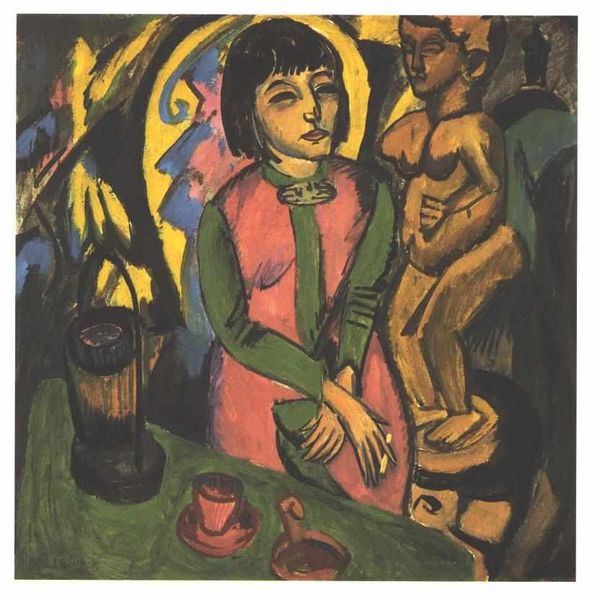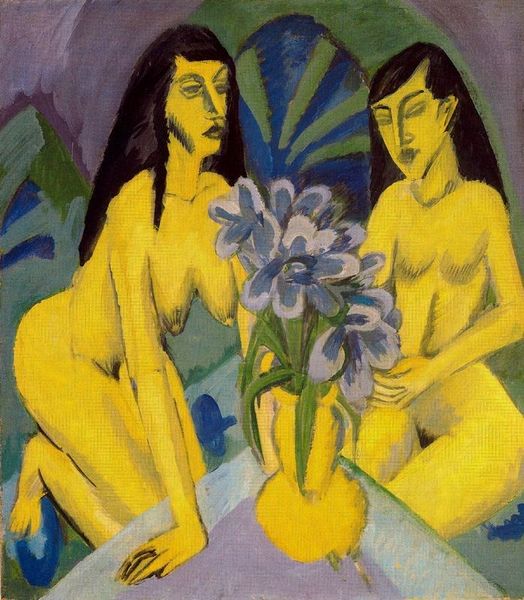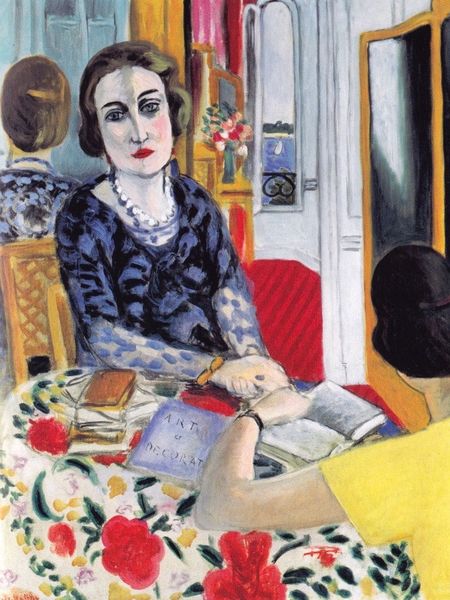
Copyright: Public domain US
Curator: Henri Matisse painted “Aicha and Laurette” in 1917 using oil paints on canvas. It's currently held in a private collection. Editor: My first impression? Striking. The figures emerge from a muted, almost melancholic backdrop, yet there’s a certain defiance in their gazes, wouldn’t you say? Curator: Yes, there is a marked tension. Note how Matisse contrasts the ochre tonality of Aicha against Laurette's darker clothing, sharply dividing the composition and creating a compelling visual dynamic. Consider the asymmetry, the angles, and that flattening of space. Editor: But think about 1917, curator. The height of World War I. The orientalism in Matisse’s earlier work takes a back seat to a certain austerity, but I still detect a fascination with non-Western garments. The composition speaks to something about societal anxieties of the time, even gender roles. The women appear constrained, pensive. Is Laurette shielding Aicha or suffocating her? Curator: That is a rather...dramatic reading. I read it more as formal experimentation with visual balance. Notice the geometrical planes making up Aicha’s face in contrast with the simplicity of Laurette's form. Also observe how Matisse uses this somewhat arbitrary background, the colors just slightly changing around each face and hat to give dimension. The artist is emphasizing pure colour, stark outlines. Editor: But pure colour and stark outlines always intersect with lived realities, wouldn't you say? To isolate formal qualities seems almost negligent when the very act of painting these women, in that time and place, speaks volumes. The somber colours evoke the suffering from the ongoing Great War and that sense of deep isolation so common to women living and surviving. I see those emotions and struggles within the surface, the lines and colours, and so, I acknowledge them. Curator: Perhaps…still, it's impossible to deny the visual power. He balances their presences using the different colour choices, though both women seem united together despite their obvious dissimilarities. Editor: Yes, absolutely. I think that both the visible artistic craft and historical reality elevate what one might see on first glance, a double portrait, into a powerful observation about humans that persist today. Curator: Precisely. I am always grateful for another perspective. Editor: As am I. Let us appreciate that visual discourse!
Comments
No comments
Be the first to comment and join the conversation on the ultimate creative platform.
